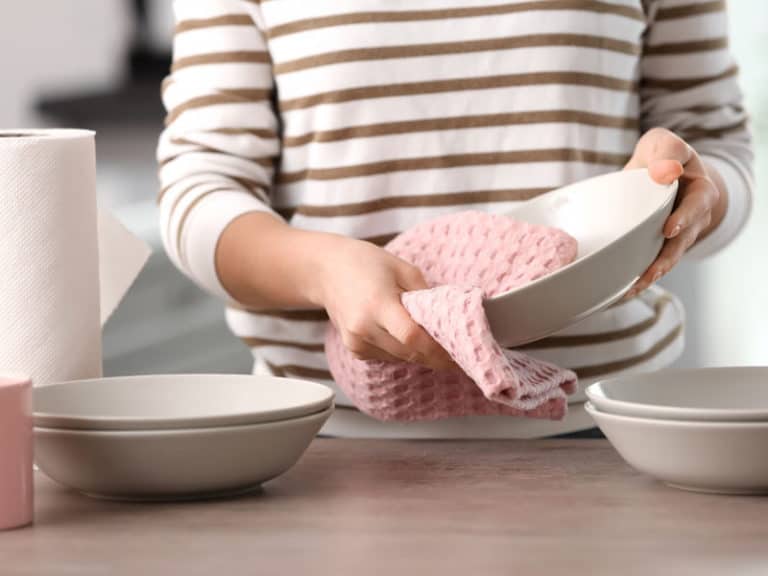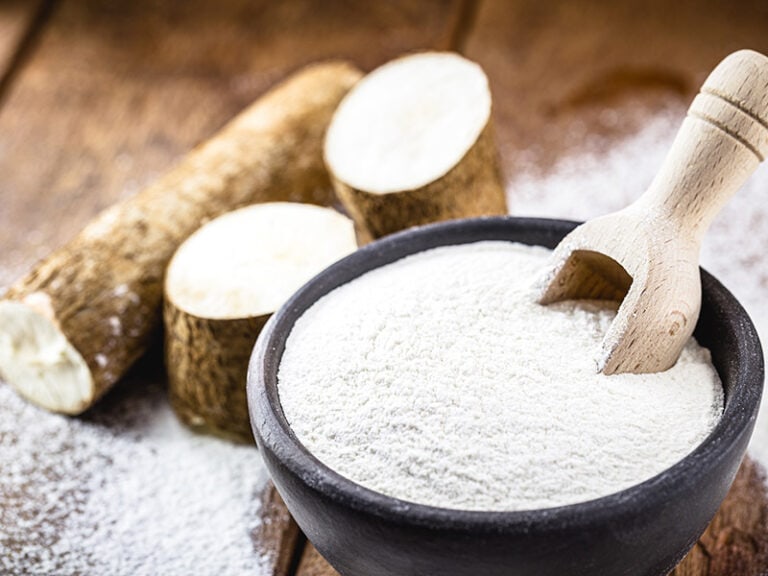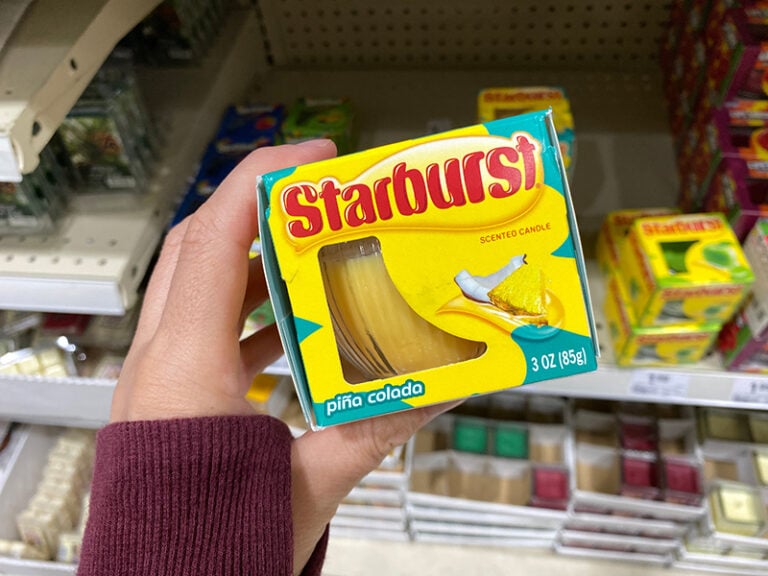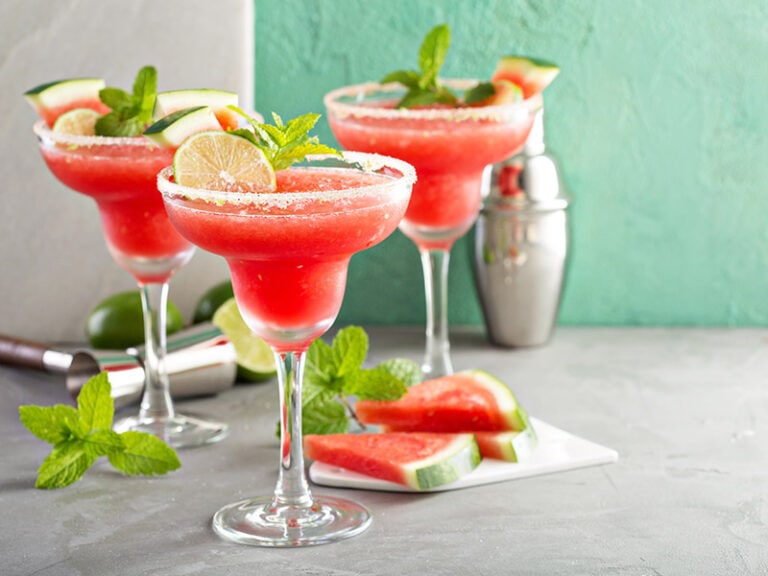What is purple broccoli? Many people are familiar with broccoli, but they don’t know there is a special kind of broccoli: purple broccoli. Purple broccoli looks exactly like a mini lavender tree or some beautiful flowers.
Although it has a unique appearance, which seems to be dyed, purple broccoli is entirely natural, harmless, and beneficial to health. Today, I’ll tell you about the advantages of purple broccoli, where you can get it, and some delicious recipes you can make with it.
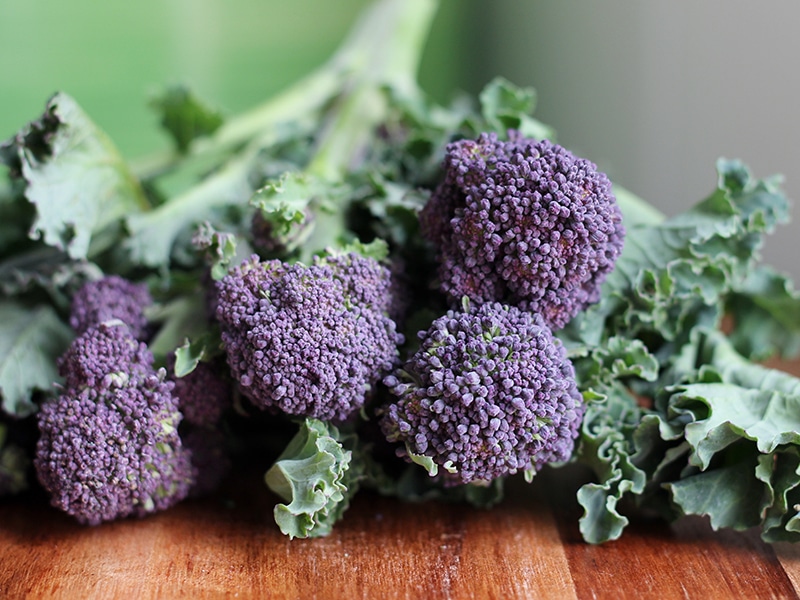
What Is Purple Broccoli?
Purple broccoli or purple sprouting broccoli is the nutritional broccoli variety. It can grow yearly and thrives in the Pacific Northwest’s maritime weather. It prefers chilly weather and produces the most during the winter.
As a result, you should grow purple broccoli in cool areas with average temperatures around 15 to 20°F (-9 to -6℃). Broccoli is a Brassicaceae family vegetable that people found around the end of the 20th century.
Its scientific name is Brassica oleracea var. Italica, and the French Vilmorin seed catalog used to call it broccoli asparagus. (1)
Anthocyanins, a natural phytochemical in plants and fruits, cause broccoli’s purple hue. This substance is water-soluble and innocuous.
It will be enhanced by sunlight exposure. Broccoli can become purple when it is overheated and treated to excessive sunlight.
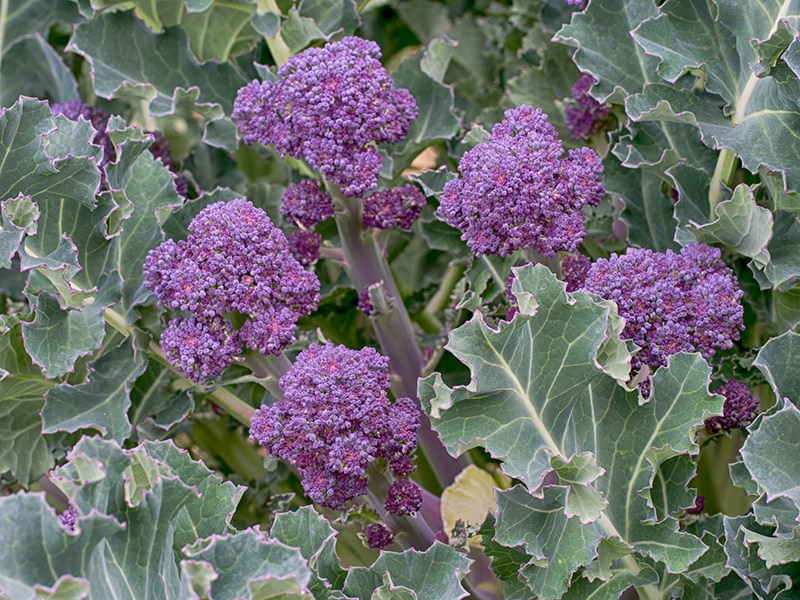
The Nutrients Of Purple Broccoli
Purple broccoli is high in vitamins such as A, B, C, and K.(2) They are potent antioxidants that can help with cardiovascular problems and counteract free radicals. According to experts, one cup of purple broccoli delivers 135% of the daily vitamin C person’s needs.
Carotene, iron, folic acid, calcium, and fiber are also found in purple broccoli. These are essential minerals to the body. Carotene aids in maintaining good skin, teeth, and vision.(3) Fiber helps regulate healthy digestion.
Purple broccoli also includes sulforaphane, which aids in preventing cancer, heart disease, diabetes, and osteoporosis. (4) Purple broccoli is an excellent weight-loss diet since it is low in carbs and high in fiber. It keeps you fuller for longer than other foods.
It also includes a lot of water. Purple broccoli has up to 90% of its entire composition value in water. It gives you a good amount of water and keeps you from being dehydrated.
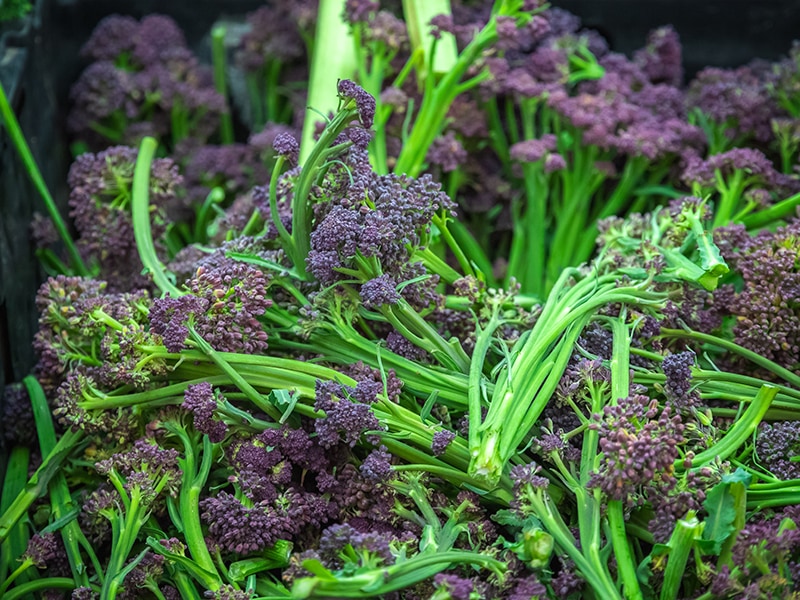
Texture, Appearance, And Flavor
If you have seen green broccoli before, you will immediately notice the difference between it and purple broccoli. Purple broccoli has some unique features, such as appearance, texture, or flavor, compared to regular broccoli.
Appearance
Purple broccoli resembles green broccoli in appearance, except for the color. It has huge green leaves that develop in circles around purple forest clusters in the center. Purple broccoli’s violet tint is not uniform and will vary among heads.
Purple sprouting broccoli has a core stem composed of tiny blossom sprouts. This main stem is often the most purple section, and the other branches develop around it. These peripheral heads are thinner and smaller than the center ones.
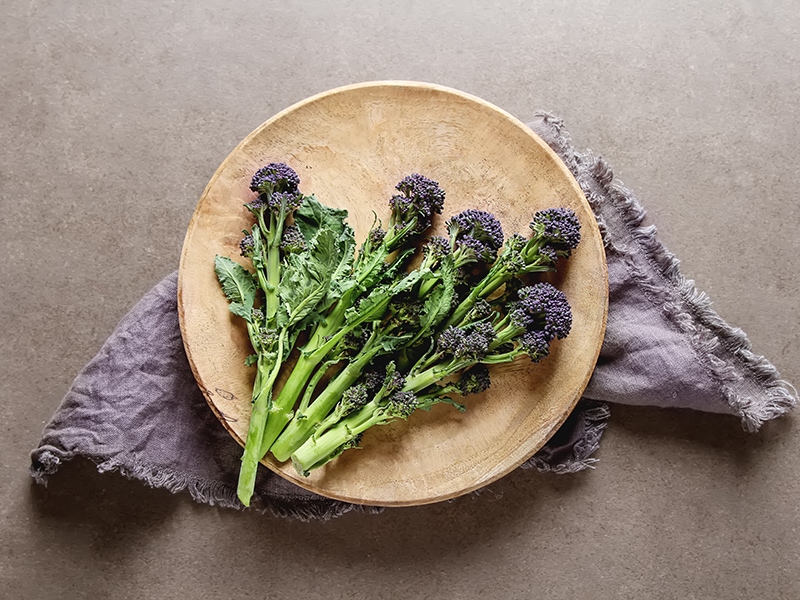
Texture
Broccoli sprout has a delicate texture that is fragile and spongy when eaten. Many agree that purple broccoli is softer than green broccoli.
A lot of people enjoy purple broccoli because of its tender texture. If you have weak jaws or a sensitive stomach, you should eat this kind of vegetable to make digestion easier.
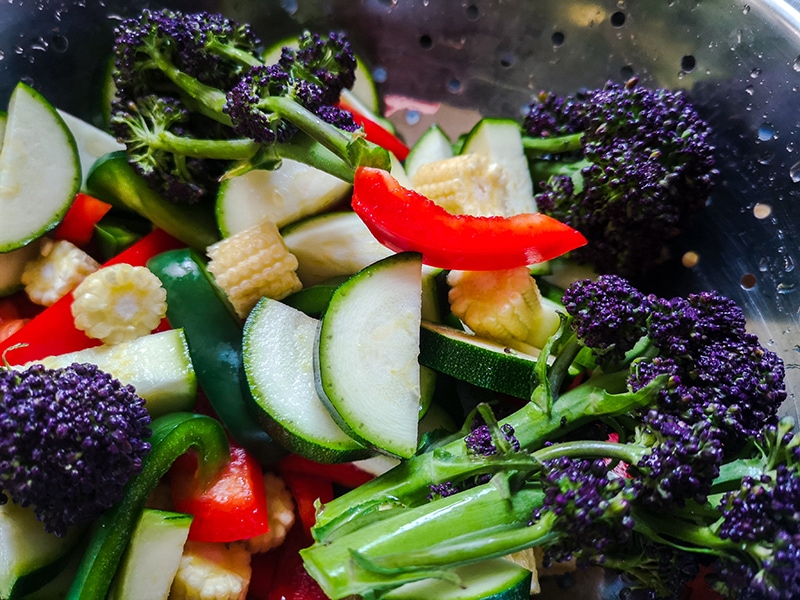
Taste
Another added benefit of purple broccoli is its taste. Because its harvest season is in cold climates, purple broccoli has a mildly sweet flavor compared to other cruciferous vegetables.
It also includes a note of pepper and nuts, contributing to its unique taste. Purple broccoli is an excellent choice when you dislike eating veggies due to their bland flavor.
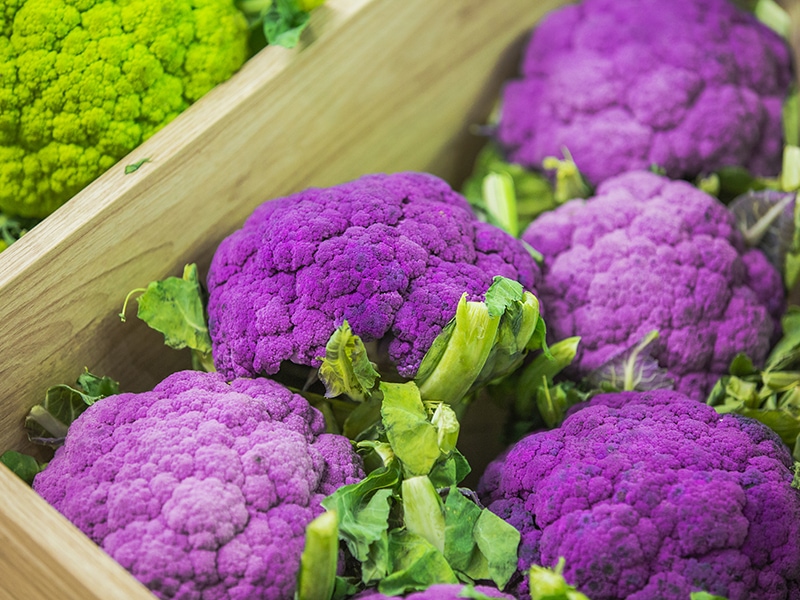
How To Cook With Purple Broccoli?
Purple broccoli is a versatile vegetable that you can cook in various ways. You may cook it in any way you choose, such as boiled, steamed, or roasted, and it will still taste excellent.
Eating Raw
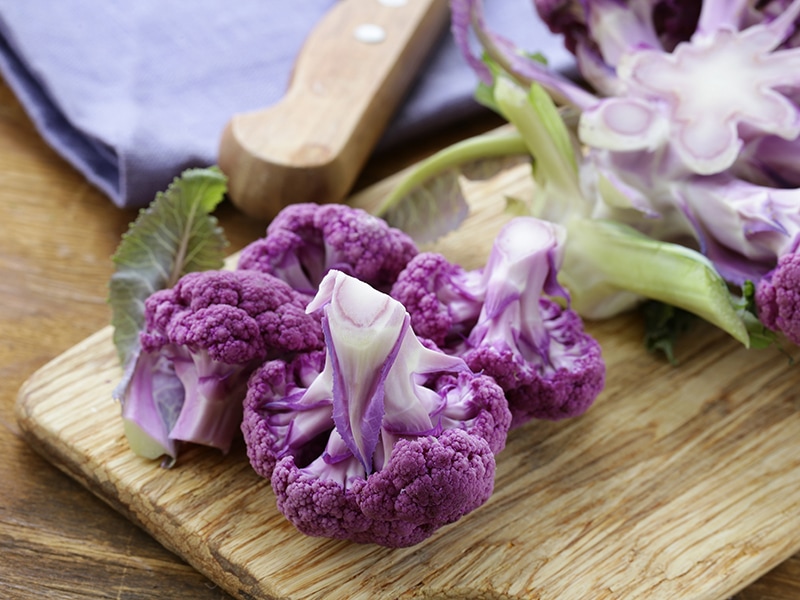
Purple broccoli is simple to prepare. You need to remove the old leaves, wash them, and chop them into bite-size pieces. You can eat raw purple broccoli when its quality is good and certified.
You can have it with dipping sauces or spices such as lemon juice, salt, pepper, or olive oil. Eating raw ensures you get the most nutrients out of your purple broccoli.
Boiling/ Blanching
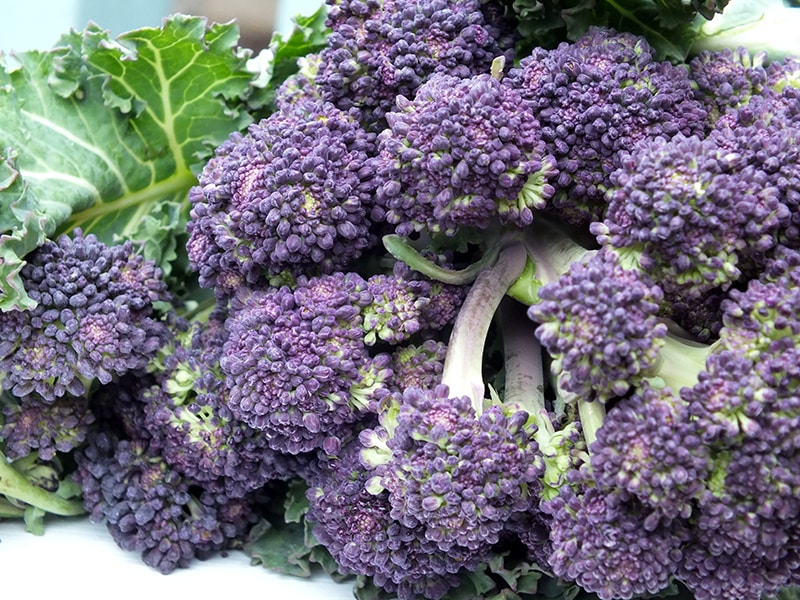
If you enjoy cooked foods but don’t wanna spend much time cooking, blanching or boiling purple broccoli is an excellent option.
Fill a saucepan halfway with boiling water, add the broccoli and cook for 1-2 minutes. After taking them out, immediately place them in a bowl of cold water. This will support the preservation of the purple broccoli’s unique hue.
Steaming And Stir-Frying
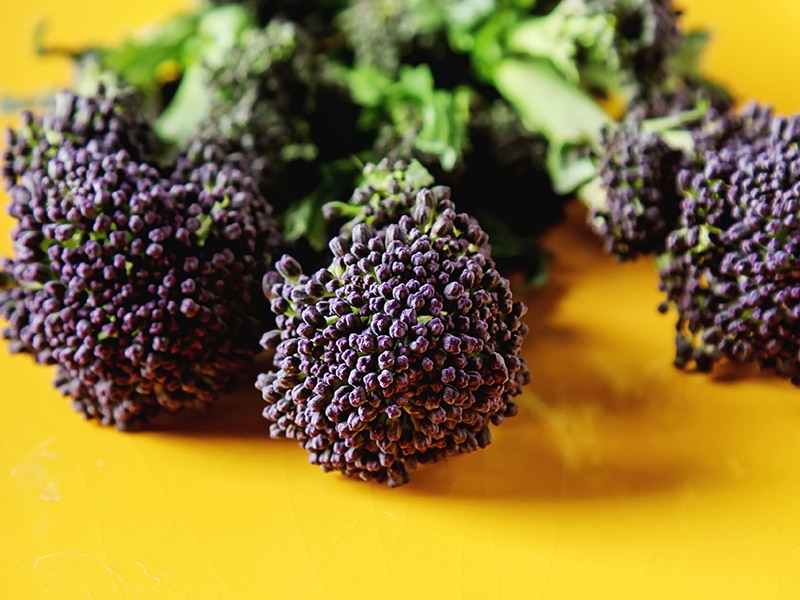
You can also steam purple broccoli. This method also helps to keep as many nutrients as possible. Put a pot of boiling water on the stove and lay a steaming tray on top. Place the purple broccoli in the tray and steam for 3 minutes.
Furthermore, stir-fry dishes are indispensable in this list. You only need a little salt, olive oil, and pepper. It is a popular way to flavor veggies without losing their freshness. Also, when cooking purple broccoli, don’t overcook it, as it will turn mushy and not tasty.
Stir-frying is a fast and excellent way to cook purple broccoli. Watch this video:
Roasting
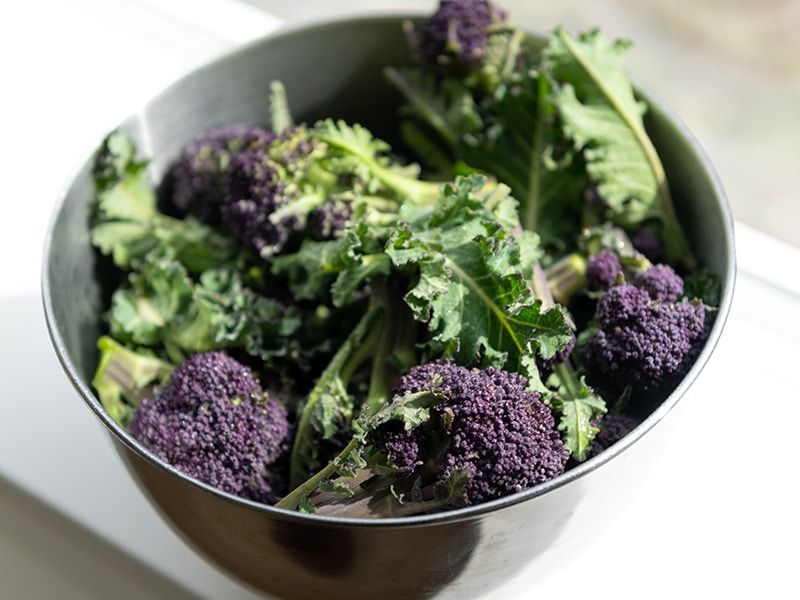
Do you enjoy eating roasted vegetables? If so, you must try roasted purple broccoli. Its flavor will be enhanced in a few minutes in the oven. Season the purple broccoli with salt and pepper. After that, coat olive oil on top, arrange it on a baking tray, and put it in the oven.
To avoid burning, carefully manage the time and temperature. You can cook purple broccoli as the main course or as an accompaniment to dishes, such as pasta, salmon, beef, chicken, etc.
Do you want to try some roast purple broccoli for dinner? Watch this video:
How To Plant Purple Broccoli?
Presently, the market is swamped with low-quality foods. If you usually eat purple broccoli but worry about its source or quality, you can cultivate it at home. To grow purple broccoli at home, use a spot that receives enough sunlight.
You’ll also need firm soil with a pH of 6.1 to 7. To plant broccoli, find a location away from rain or wind. As you live in an area with a long rainy season, you might choose to grow them indoors.
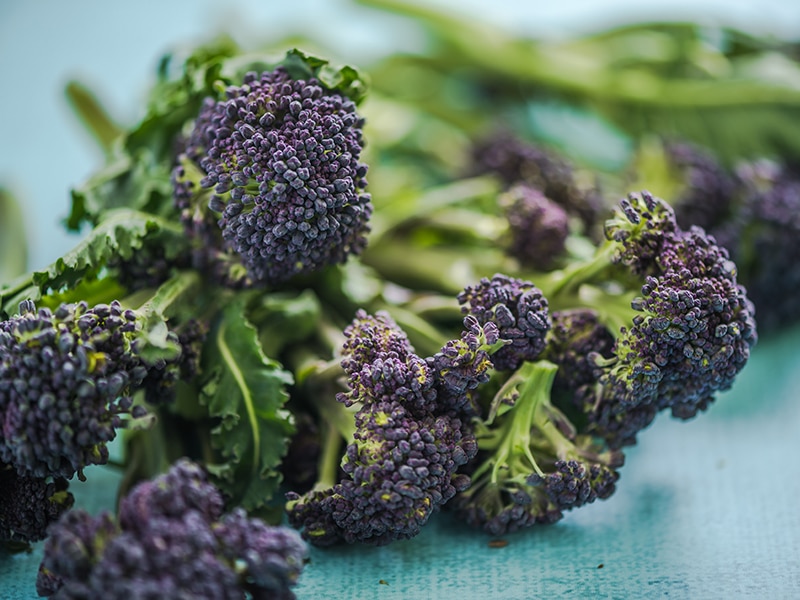
Step 1: Plant Your Seeds
Because purple broccoli flourishes in cold weather, it’s ideal to start planting in early winter for the highest quality. Fill your small pots with loamy soil or fine compost. If you don’t have a suitable pot, you can use an appropriate container or multi-cell tray.
Pat the pot lightly before spreading the seeds to let the soil inside settle and prevent creating lumps. Plant 1 or 2 seeds in a dirt recess.
Then add an additional soil layer over and sweep away any excess. You can also use cuttings rather than seeds when you have other purple broccoli plants.
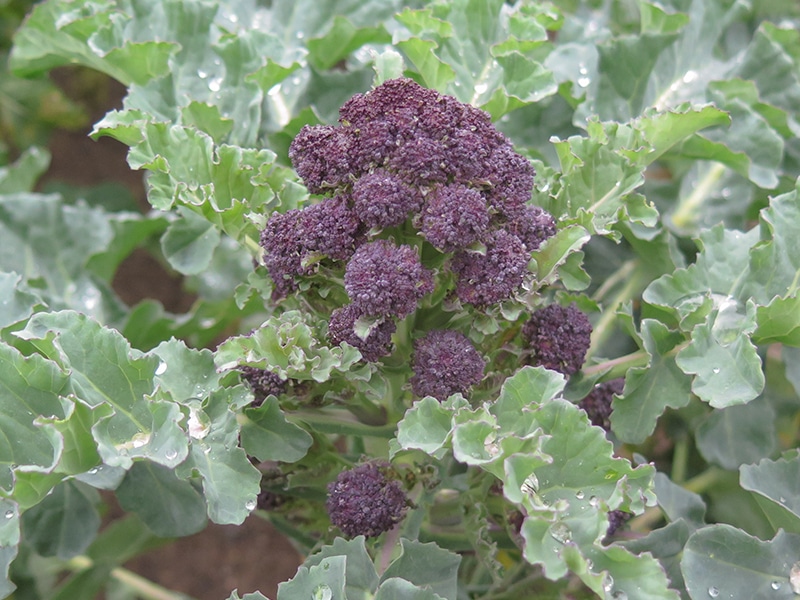
Step 2: Transplant Your Broccoli
Place your purple broccoli plants in full sunlight and give them enough water. You should keep your eyes on the seedlings for the first four weeks. Keep them hydrated and replace inferior plants with healthy ones.
Move the seedlings to your garden or planting spot after they are 3 to 4 inches in height. Before transplanting the plants, thoroughly clean the plot. Remove any large rocks or grasses to allow your purple broccoli to achieve its full potential.
Mix nitrogen-rich soil or compost into the ground you’ll use, and add lime if it’s acidic. Lightly till the soil and place the seedlings, allowing about 2 feet between each plant.
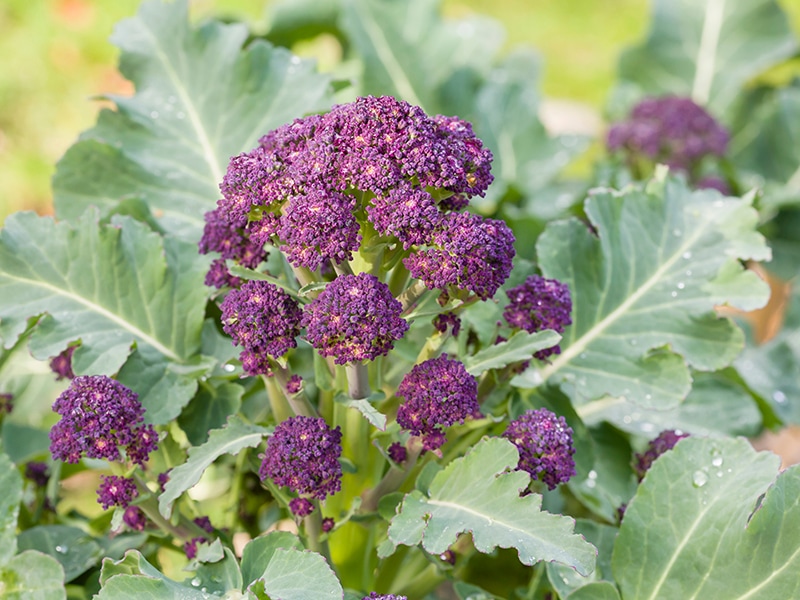
Step 3: Take Care Of Your Plants
You should not neglect to care for the seedlings once they have been transplanted to their final place. Make sure the soil is always moist enough, and if necessary, apply a layer of dry mulch to keep it moist.
When purple broccoli grows slowly, adding extra manure, liquid feed, or seaweed pellets to hasten the plants’ development. Remove any flowers before they bloom. You need to clip a cluster in the middle without injuring the main stem.
This will improve the growth of your purple broccoli and allow for more side shoots. You also may cover the seedlings with a mesh of fleece to prevent insects or birds. You can harvest when your plants are around 6 inches tall.
Purple broccoli will take a lot of work to plant. You can look at this growing instruction:
Pro Tips For Storing Purple Broccoli
Purple broccoli provides many valuable nutritional values for the body. However, this is only true when you store and process it while it is still within a reasonable time. It’s important to consume fresh veggies like purple broccoli as soon as you buy them.
Even if you cultivate your purple broccoli, you should consume it as soon as after harvesting it. However, if you wrap it in plastic and refrigerate it, you may extend the shelf life by about 4 to 6 days.
When stored in the freezer, you may extend its storage life by up to 6 months. However, freezing broccoli causes it to lose its fresh flavor. For best results, quickly boil purple broccoli and then freeze it.
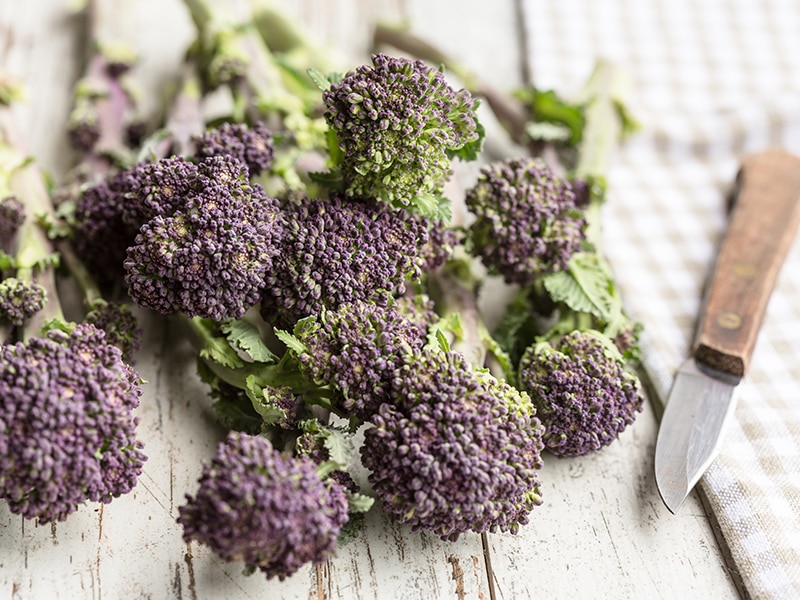
The Best Recipes With Purple Broccoli
Many people, especially children, hate eating broccoli, including white and purple broccoli, since they consider it tasteless.
But the issue is not the broccoli. It’s because they choose the wrong technique, which fails to bring out the unique flavor of broccoli. You can enhance the family dinner with the purple broccoli recipes below.
Purple Broccoli With Hazelnuts
The rich taste of hazelnuts and the subtle sweetness of purple broccoli will make you fall for it. You simply toast the hazelnuts with hazelnut oil, then stir-fry them with purple broccoli to have a delightful vegetarian dish.
Purple Broccoli Stir Fry
Purple broccoli and pasta will be the greatest combination you’ve ever known. Stir-fry purple broccoli to serve as an accompaniment with spaghetti. Add ginger, soy, garlic, and chili flakes to enhance the flavor of this dish.
Purple Sprouting Broccoli On Toast
You can make a wonderful breakfast with some purple broccoli and eggs. You just need 10 minutes to cook this dish. Stir-fry purple broccoli and garlic in one pan on medium-high heat. Then. fry an egg in another pan and put all these ingredients on toast ciabatta for a nice breakfast.
FAQs
I’ve provided various helpful information about purple broccoli. However, there are still subtle facts that you need to know. You can read the extra answers about purple broccoli below.
Purple Broccoli Is A Excellent Choice For Your Meals
Broccoli is a wonderful and nutritious vegetable that you should never skip. It has a pleasant flavor and is versatile. It is also a healthy choice for everyone, from children to adults. Purple broccoli will be an excellent meal as you’re not allergic to it.
Do you understand what purple broccoli is now? Please let me know your thoughts about this article in the comment section. Also, remember to share the post so it can reach more people!
References
- Mcknenzie, L. (2021) Purple sprouting broccoli guide for PNW Growers, Organic Seed Alliance.
- Paul , D. (2022) Broccoli sprouts: Health benefits, nutrients, serving suggestions, and more, WebMD. WebMD.
- Olsen, N. (2020) Benefits of beta carotene and how to get it, Healthline. Healthline Media.
- Kim, J.K. and Park, S.U. (2016) Current potential health benefits of sulforaphane, EXCLI journal. U.S. National Library of Medicine.
- GardeningChannel (2019) How to grow purple sprouting broccoli, Gardening Channel.

